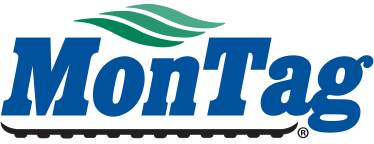On this episode of the Strip-Till Farmer podcast, brought to you by Montag Mfg., representatives from several companies showcase their new strip-till equipment.
As 2023 comes to a close, we revisit our trip to the Farm Progress Show in Decatur, Ill. Strip-Till Farmer editors scoped out some of the latest strip-till innovations set to hit the market for the 2024 growing season.
Learn about new equipment from Vulcan Equipment, Harvest International, Lynx Ag, Precision Planting, Montag Manufacturing, Yetter and Schlagel Manufacturing during our tour of the 2023 Farm Progress Show.
The Strip-Till Farmer podcast is brought to you by Montag Manufacturing.
Montag Manufacturing has rolled out two new industry-first products. Cover Crop Plus is the first metering system dedicated to cover crop seeds, able to accurately meter even the smallest seeds like cover cress. It can be mounted to tillage implements, combines and self-propelled high clearance machines.
The second new product is the mammoth sized model 2224 with 13 or 16 tons capacity for producers running with larger strip-till implements. For more information, visit the Montag website or your Montag dealer.
Full Transcript
Noah Newman:
Hello and welcome to another edition of the Strip-Till Farmer Podcast, brought to you by Montag Manufacturing. I'm your host, Noah Newman, technology editor. So as 2023 comes to a close, we take a look back at our trip to the Farm Progress Show in Decatur, Illinois. We scoped out some of the latest and greatest strip-till innovations and we came across a lot of great stuff. Let's kick off our tour rapid fire style with brand new strip-till equipment from Vulcan, Harvest International, and Lynx Ag.
Don Slagel:
Hi, my name is Don Slagel with Vulcan Equipment and we're here at the Farm Progress Show showcasing a few new products that are available for the coming season. Right here in front of us is a 24-row front fold toolbar all set up to either create strips or fresh and fall strips and apply liquid fertilizer. It would also be available with a dry fertilizer box on and apply dry fertilizer.
In the past, we have only offered smaller versions and just row units and we sold a lot of individual row units and people had to build their own 16, 24-row front fold if that's what they were looking for for narrow transport. So this is new for us, so we're very excited about it.
The row units are pretty much what we've had for years. We start out in the front here with the row cleaners to clear the residue out of the way. Three coulters here to do light vertical tillage just to get the residue out of the way, warm up the soil, and the basket on the back here controls the depth of that and it lightly firms the soil and makes a great planting seed-bed.
I'm going to show you what we've had available here for a lot of years. This is a 12-row vertical fold. We've got a lot of those out on the market already all over the United States and Canada. That's still available. You can also put liquid or dry on with that if you use a tank system of your choice. So we also offer these in individual row units where you can build your own toolbar to the size, how you want it.
Probably the big difference in us and a lot of the competition out there is these are very lightweight, designed for light tillage. It doesn't take a lot of horsepower, a lot of fuel requirement or anything to go out and do the job that you need, that your planter is going to thank you for when you're out there planting. We've had a lot of no tillers over the past years that they want to get out there earlier. They don't get a good planting environment early on when it's cold and wet, so this will help it warm up, dry out, get them in there earlier, and it also qualifies for a lot of the conservation tillage practices that are being required more and more by some areas with some watershed districts. So it still qualifies for that being light tillage.
Dustin Friesen:
Hello, I'm Dustin Friesen with Harvest International and this year at the Farm Progress Show we're excited to introduce our new laser till one strip-till row unit. For years, we've been manufacturing custom planters and high-speed row units, and so we've learned a lot in that market and bringing a lot of that new product development into our strip-till side.
And so here we've got a five-sections-of-action strip-till row unit. So right up here we've got our parallel linkage, and one of the first features is on our planter row units, we introduced a tapered bushing assembly and so this is what that tapered bushing looks like. These are larger ones on the strip-till unit, extremely long-lasting. Anytime you get any slop, you just tighten up that bolt, pushes that taper back together for extremely long life and easy service. So we've got our row cleaner with hydraulic downforce, hydraulic downforce on the row unit moving into the coulter there for cutting.
And then the next section here would be what we're calling our mini shank where we've got the ability for dry fertilizer or anhydrous or even liquid fertilizer application. Those knife blades there are designed to create a root zone, again, for easy application and trying to help create that berm. And then we've got our berm building discs here and then a packing wheel at the end here, again, with some hydraulic downforce.
And then one of the other unique features with a front-fold planter especially, one of the challenges with strip-till units is can get very wide with transport width, especially out east. It's a challenge. And so we've got a hydraulic stone here that lifts this complete section up so that on a thirty-inch spacing you're no wider than the center section of your frame. So again, a huge advantage there for narrow transport.
So this is just our first introduction here. So we're going to be doing a lot of tests and demos throughout the country this fall and into spring. And so there'll be a lot of things that we'll be looking at, getting a lot of good feedback in different markets. It works great in Iowa and so we know we've kind of learned on the planter side of things that what works in Iowa might not work so well in Pennsylvania or North Dakota, and so we're excited to get that feedback, get these in the dirt in a lot of different places and be able to keep on developing these, and hopefully have something more to talk about even more next year.
Lance:
Hi, I'm Lance with Lynx, and we're here with the introductory offer of our three-inch hosing system for the 24-row strip-till industry. We've got three-inch hose feeding a splitter that is dividing out into two two and a half inch lines. The splitter is fully adjustable to make sure that the product is equal to both rows, so you can do a catch test to make sure that we're getting the same amount of product to each row. This system is increasing our capacity from around 750 pounds per acre maximum at five miles an hour to just over a thousand pounds per acre at five miles per hour. It also allows for less plugging than our previous system because our nozzling is far larger.
So we also have some hose routing systems in place on these that keep everything rigid and in place so that we don't have a lot of valleys and don't have a lot of wear on the hoses either because it keeps everything pretty straight. It also keeps these splices and that also keep the hoses shorter so that when a hose does go bad around a bend, you're not replacing 40 foot of hose, you're replacing between 10 and 20 foot of hose. So simplifies it for the end user.
Noah Newman:
It seems like that would be a huge plus for strip-tillers. Increase the capacity from, I forget the exact number, you said. A thousand?
Lance:
Yeah, 750 to around a thousand. Yeah.
Noah Newman:
How big of a difference maker could that be?
Lance:
It becomes a big difference maker if you're wanting to go fast while you're doing it because a lot of guys aren't putting on a thousand pounds an acre, but they might be putting on 500 and they want to go 10 mile an hour rather than five mile an hour. So you still have that need for increased capacity because now we're having to push that much more product through the lines.
Noah Newman:
Is this available now or?
Lance:
Yeah. Yeah, I think there'll be nine or 10 of these systems out this fall, so we'll have several of them running.
Noah Newman:
All right. Let's head over to the Precision Planting tent now. Josh Stoller is a strip-tiller and he also works for the company as a Regional Manager for Southern Illinois. Josh tells us all about Clarity, a new blockage and flow monitoring system.
Josh Stoller:
All right, one of the things that we're looking at here with Clarity is with strip-till and kind of some of the management that we've got with monitoring, when we get used to monitoring planters, we're very specific on singulation, spacing, [inaudible 00:08:12] some of those things, and we get to something like air seeders or strip-till and there's a lot of money tied up into those. We want to know and understand what are we doing a little bit better than what I've got now.
So one of the things that we've done on air seeders, we've got blockage monitors. So these are basically telling is one line or a drop plugged or flowing. It's an on or a off. But we start seeing many situations when either on a cedar or on a strip-till rig where it's partially plugged and all of those are still flowing but not at the right rate. And so when I've got a strip-till rig specifically that there's high horsepower and high dollars in the rig itself, we can't afford to do it wrong.
And so a lot of times when I see something that's partially plugged, say if I would have a chunk that's stuck in a meter roll and I've got 80% the flow. We've got just for demonstration purposes, if I have it mostly plugged here and I start seeing that on the monitor, I start seeing I'm dropping off on my consistency, I'm deviating from what I'm trying to do. And on this one as well, you can start to see if I've got all of those rows, I've got some that are low, some that are high, what is it? So on an air seeder I would see maybe a tower that something's halfway stuck in there. So those are things that we could catch, catch chunks, catch rocks.
Where fertilizer prices were last year, thankfully they've come down, but it gets to be extremely expensive. And we've all seen that in the field when you're looking at it and I see one row that I can pick out is behind or looks like it's significantly nutrient restrained, you could pick that out over and over. A lot of time that is application like this that's been pulled back or partially plugged. So now with Clarity, we could take the same 2020 that we've had in the planter, combine now the sprayer with things like Symphony and use it on a dry strip-till rig to where now I can get a lot better and more efficient with those.
There is a lot of interest. There's a lot of guys starting to look at and run. When we initially started with this, it was more focused on air seeders and basically non-singulated crops, and many of those were putting nutrients on with the air seeders. And so we looked at it. We're like dry strip-till. This is one of the things that we've been lacking in. And again, the guys that are doing dry strip-till are some that have been pushing the limits. And so again, with the investment of the expensive equipment that it takes, we can't afford to do it wrong. And so guys come to us and they're looking at, "Hey, I didn't realize that we could do anything with this strip-till pass." Well, we can and we can get it fairly specific on making sure that I get as consistent as possible, not only with the inputs but also with that machinery in that pass.
This is available now. So if you've got blockage sensors now, we would just tie into those. If we do not yet have blockage sensors, we could add some, and then yeah, everything's fully available. Yeah, you'd be good for any region. Anywhere that you'd be plugging up high humidity type of thing is probably where you'd see some pretty significant payback.
Noah Newman:
Let's burn a quick time out and share a word from our sponsor. Montag Manufacturing has rolled out two new industry first products. Covercrop Plus is the first metering system dedicated to cover crop seeds able to accurately meter even the smallest seeds like CoverCress. It could be monotube tillage implements, combines, and self-propelled high clearance machines. And the second new product is a mammoth size model 2224 with 13 or 16 tons capacity for producers running with larger strip-till implements. For more information, you can visit the Montag website or your Montag dealer. And lucky for us, we caught up with Roger Murdock at the Farm Progress Show for Montag Manufacturing for more info on both products.
Roger Murdock:
So Montag realized that there was a need for a unit that was specifically designed for cover crops. So our Cover Crop Plus unit takes a machine that we had already designed for doing cover crops and nutrients, but with our Cover Crop Plus in this video here you can see that the auger is designed to handle the very small seeds. There's crops like CoverCress, which is an oil seed that is as much as 500,000 seeds to the pound. So very tiny seeds. So we needed to redesign our delivery system to accommodate those seeds.
So now the Cover Crop Plus can be utilized on tillage equipment. It can be used on the harvest seeder, which is a unit that attaches to the combine. So now as I'm combining, I can put my cover crop down. We also have it if you really need a lot of cover crop put down at one time where you can take off the Hagie tank on the big sprayers and put the fortifier on so you can deliver cover crops over 120 foot boom. And now recently, we just added it to the Hagie detasslers, so now is there detasseling or doing marital destruction with the raising of seed corn, you can put cover crops down also.
So the new 2224 is designed for the big grower. So why would people want to do broadcasting? They don't anymore. Everybody wants to place the nutrient where it can be utilized in the row where the crop's going to grow. So with the 2224, we're able to offer a bin size of 13 up to 16 ton to accommodate those bigger toolbars that can go up to 24 rows, whether it's just nutrient placement or whether it's strip-till units.
This unit has some key features like hydraulic fold. So with remote control from the cab, you simply flip a switch and the lids open up for easy fill, and you have individual units up to four row section for shut off or better utilizing the nutrient placement as you travel through the field.
Noah Newman:
Thank you very much, Roger. Our tour of the show continues now with Yetter AOR Manager, Andy Thompson. Andy gives us our first look at the new Fast DuraPlacer strip-till bar.
Andy Thompson:
Behind me here we have the DuraPlacer. It's a brand new toolbar from Fast Ag Solutions, and so we've introduced this here at Farm Progress show. It's a collaboration between Yetter Farm Equipment and Fast Ag Solutions. So the Fast DuraPlacer with Yetter Strip Freshener CCs is what we have here behind it. So really what we're introducing to the market is transforming our strip-till a little bit into a high speed, higher efficiency strip-till. So traditionally, we think a strip-till is a shank or a knife, it's going to be going a little bit deeper. It's a high horsepower requirement, fairly low speed requirements or abilities I should say.
So what we've really done is we've been concentrating now over the last decade trying to become more efficient in our strip-till capacity. Now for us, we always talk about strip-till as your system, not necessarily the tool, but as far as the tools that it takes to carry out our strip-till, we can kind of put different pieces in place. So looking for those pieces has been able to speed up and ultimately become just more efficient in that application pass.
So this particular machine here, we're using the Yetter Strip Freshener CCs. The CC stands for cab control. It gives you, the operator, the ability to be able to control the adjustments on this machine, the performance of this machine from the tractor cabin. So that right there is going to speed up our process because we don't have to get out so much to make adjustments. But ultimately when we're in the cab, we're typically going to be running this at speeds anywhere from eight to 10 mile per hour, and we're typically going to be using about 10 horsepower, slightly more than that per rev to be able to achieve that speed.
So when I look at a 24-row machine like what's behind me here, we're talking about a 24-row machine getting pulled with about a 350 horse, like a front wheel assist tractor, and then being able to do about 55 to 60 acres per hour.
We can get this with liquid or dry fertilizer. The machine behind me that we have here is a liquid machine. It's going to have 2,400 gallon tank on it. Of course, you can see the large wheels for the high load carrying capacity as well. So this machine's going to give us the ability to carry a large capacity, not having to make many stops, not having to get out to make adjustments because [inaudible 00:17:06] the cab and then ultimately, like I said, being able to cover 55 to 60 acres per hour.
So what we have right here, when we say the cab control, this is the control box that's going to go in the cab. Of course, we're going to have a monitor, whether it be an ag leader or a deer or many others that's going to be controlling your fertilizer and everything like that. But as far as the row units performance, we're going to be using this cab control. So this cab control using pneumatics is going to give us the ability to control downforce on the row units, that's going to control up or downforce on the road cleaner, and then it's also going to control up or downforce on our rowing basket. So it's going to give you the ability from the cab to be able to make adjustments so that way we can the performance of the units to whatever our conditions are.
Noah Newman:
One last stop on the tour of Progress City USA, we catch up with Schlagel Manufacturing's Jonathan Spence to talk about the company's rapid till unit. Spence sold one to Georgia strip-tiller, Alex Harrell. We told you about that last month on the podcast, and Alex used it to achieve a soybean world record, 206 bushel yield. Jonathan Spence has more on that.
Jonathan Spence:
We talked about this. Alex was in the booth this morning and we didn't have much. He's a pretty popular guy right now. South Georgia, they say it's hotter than train smoke, so he's having a good time up here. One thing that I did want to make sure that we did get a chance to talk about though is how we build a strip and how we differentiate ourselves from competition and how this machine actually works.
We do something a little different. We run the depth of this machine off the rear basket. That's our gauge wheel for the whole machine. And that gives us a unique opportunity to firm that seed-bed up a little differently than most companies do. So for Alex, you go to those meetings and you listen, you talk to guys about yield potential, and the guys that are really having good success with that talk about seed to soil contact. And our whole company, everything we sell is based around having seed to soil contact when you're planting.
So for this machine to be able to have a shank rip, everything folds back in with our wavies, and then to get compressed back here on the back, we really give that seed a good chance to have good germination and even germination across the field.
I was at a conference not too long ago and I heard somebody mention that if you're going to be in a competition like that, especially on corn, if those corn plants don't emerge within six hours, I think it was six hours or 12 hours of each other, you don't even have a chance of winning that competition, which was amazing to me, which tells you it has to be pretty perfect and near perfect seed-bed conditions would be no voids whatsoever, and we do a really, really good job of having a void in the seed-bed that's ready to plant.
Noah Newman:
That'll wrap things up for this edition of the Strip-Till Farmer Podcast. Thanks to everyone for taking the time to showcase their new equipment. Thanks to our sponsor, Montag Manufacturing, for making this podcast series possible. I'm Noah Newman. Until next time, Merry Christmas and Happy New Year. See you in 2024.












